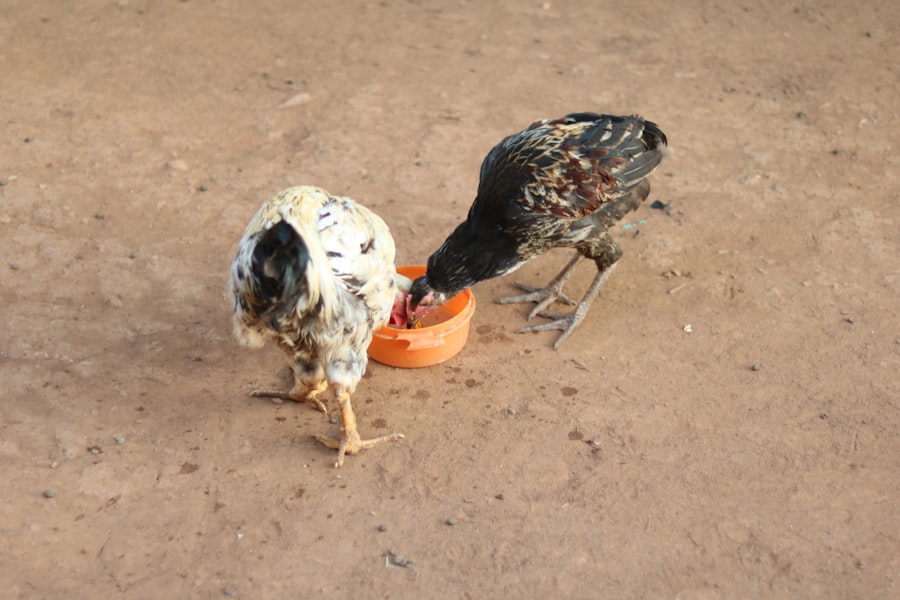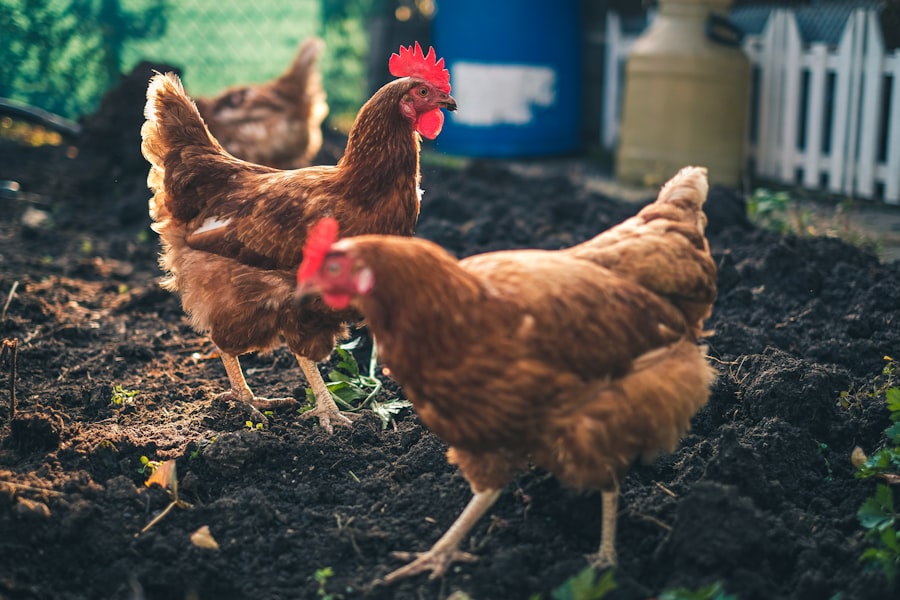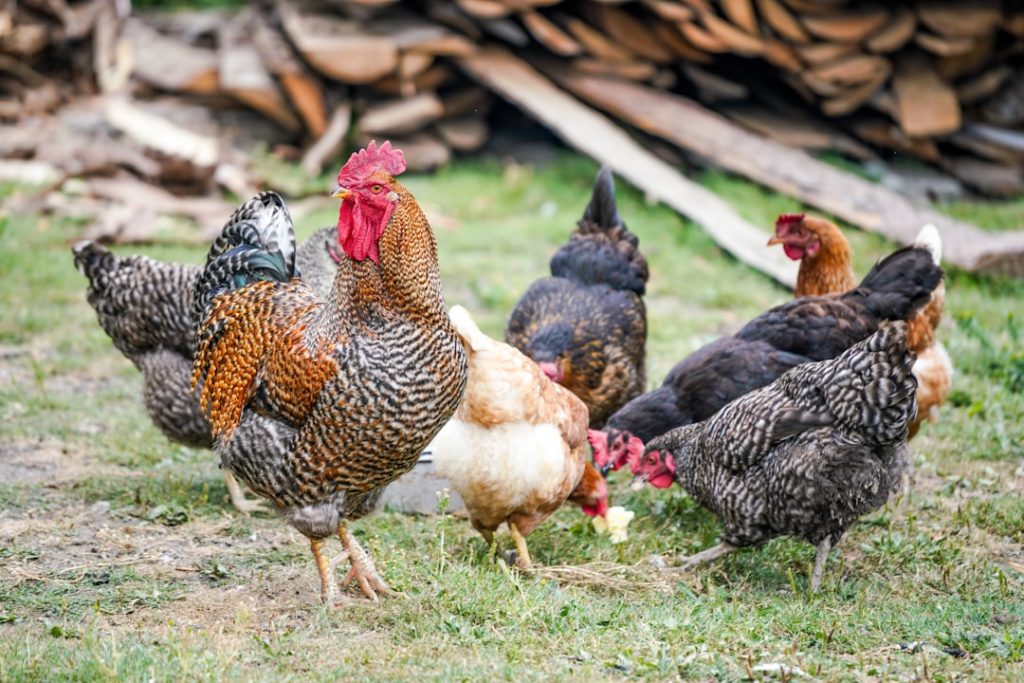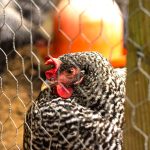Starting a chicken coop involves several initial costs. The primary expense is the coop itself, which can range from a simple DIY structure to a pre-fabricated unit, with prices varying accordingly. Essential equipment such as feeders, waterers, nesting boxes, and bedding must also be purchased to ensure the chickens’ health and well-being.
For those planning to free-range their chickens, fencing may be necessary to contain the birds and protect them from predators. The cost of acquiring the chickens, whether as chicks or mature hens, is another crucial expense to consider when establishing a flock. However, it is possible to start a chicken coop on a limited budget.
Repurposing materials and constructing a coop and equipment can significantly reduce initial costs. Sourcing chickens from local breeders or rescue organizations may be more economical than purchasing from commercial hatcheries. With careful planning and budgeting, individuals can establish a chicken coop without incurring excessive expenses.
Table of Contents
Key Takeaways
- Initial costs for raising chickens include purchasing a coop, run, and necessary equipment.
- Ongoing expenses for raising chickens include feed, bedding, and regular maintenance of the coop and run.
- Coop and run maintenance is essential for keeping chickens healthy and safe from predators.
- Proper feed and supplements are necessary for the health and productivity of chickens.
- Veterinary care is important for keeping chickens healthy and addressing any health issues that may arise.
- Egg incubation and brooding require specific equipment and careful monitoring.
- Unexpected costs may arise from unforeseen health issues, predator attacks, or equipment failures.
Ongoing Expenses
Once your chicken coop is up and running, there are ongoing expenses to consider. The most significant ongoing expense is feed. Chickens require a balanced diet to stay healthy and lay eggs regularly.
The cost of feed can add up, especially if you have a large flock. Additionally, bedding will need to be replaced regularly to maintain a clean and comfortable coop environment for your chickens. Other ongoing expenses include regular maintenance of the coop and run, such as repairing any wear and tear, as well as cleaning and disinfecting to prevent disease.
On the flip side, there are ways to minimize ongoing expenses when it comes to keeping chickens. For example, you can explore options for sourcing affordable feed in bulk or growing your own chicken feed. Additionally, implementing sustainable practices such as composting bedding and using it as fertilizer can reduce the need for frequent bedding replacements.
By being mindful of ongoing expenses and finding cost-effective solutions, you can successfully manage the financial aspect of maintaining a chicken coop.
Coop and Run Maintenance

Maintaining the coop and run is essential for the health and well-being of your chickens. Regular maintenance tasks include cleaning the coop, replacing bedding, and ensuring proper ventilation. It’s also important to inspect the coop for any signs of wear and tear and make necessary repairs to prevent predators from gaining access.
Additionally, the run should be kept clean and free of debris to prevent disease and provide a safe environment for your chickens to roam. On the other hand, coop and run maintenance can be made easier with some strategic planning. For example, implementing a deep litter method in the coop can reduce the frequency of bedding replacement and help control odors.
Using natural materials such as sand or gravel in the run can make cleaning easier and more efficient. By staying on top of regular maintenance tasks and finding ways to streamline the process, you can ensure that your coop and run remain in good condition for your chickens.
Feed and Supplements
Providing a balanced diet is crucial for the health and productivity of your chickens. A good quality layer feed is essential for laying hens, while broilers will require a different type of feed to support their growth. Additionally, offering supplements such as calcium or grit can help meet specific nutritional needs of your chickens.
The cost of feed and supplements can vary depending on the size of your flock and their dietary requirements. On the contrary, there are ways to save on feed costs by exploring alternative feeding options. For example, incorporating kitchen scraps or growing fodder can supplement your chickens’ diet and reduce the amount of commercial feed needed.
Additionally, allowing your chickens to free-range can provide them with access to natural forage, reducing their reliance on purchased feed. By being mindful of your chickens’ nutritional needs and exploring cost-effective feeding options, you can manage feed expenses while still providing a healthy diet for your flock.
Veterinary Care
Just like any other pet, chickens may require veterinary care from time to time. This can include routine check-ups, vaccinations, or treatment for illnesses or injuries. The cost of veterinary care for chickens can vary depending on the services needed and the availability of poultry veterinarians in your area.
On the other hand, there are proactive measures you can take to minimize veterinary expenses for your chickens. For example, practicing good biosecurity and hygiene can help prevent the spread of disease within your flock, reducing the likelihood of needing veterinary intervention. Additionally, learning basic first aid skills for chickens can help you address minor health issues at home without incurring veterinary costs.
By being proactive about your chickens’ health and well-being, you can potentially reduce the need for frequent veterinary care.
Egg Incubation and Brooding

If you plan on hatching your own chicks or expanding your flock, you’ll need to invest in an incubator for hatching eggs and provide a brooder for raising chicks. Incubators come in various sizes and styles, with prices ranging accordingly. Additionally, setting up a brooder with heat lamps, bedding, and feeders is essential for providing a warm and safe environment for newly hatched chicks.
Conversely, there are ways to save on egg incubation and brooding costs by exploring alternative methods. For example, some chicken breeds are excellent brooders and can hatch eggs naturally without the need for an incubator. Additionally, building a DIY brooder using simple materials can be a cost-effective alternative to purchasing a pre-made brooder.
By exploring different options for egg incubation and brooding, you can find a method that suits your budget while still ensuring successful hatching and chick rearing.
Unexpected Costs
Despite careful planning and budgeting, unexpected costs can arise when keeping chickens. This may include emergency veterinary care for sick or injured chickens, repairs to the coop or run due to unforeseen damage, or unexpected expenses related to weather events or predator attacks. On the flip side, having an emergency fund specifically designated for unexpected chicken-related expenses can provide peace of mind and financial security when unforeseen costs arise.
Additionally, implementing proactive measures such as reinforcing coop security or having a backup plan for extreme weather events can help minimize the likelihood of unexpected expenses. In conclusion, starting and maintaining a chicken coop involves various costs that should be carefully considered and managed. By being mindful of initial costs, ongoing expenses, maintenance needs, feeding requirements, veterinary care, egg incubation and brooding, as well as unexpected costs, you can successfully navigate the financial aspect of keeping chickens while providing a healthy and fulfilling environment for your flock.
If you’re considering keeping chickens, you may also want to read about how to insulate a chicken coop to ensure your feathered friends stay warm and comfortable during the colder months. This article provides valuable tips and advice on how to properly insulate your coop to protect your chickens from the elements.
FAQs
What are the initial costs of keeping chickens?
The initial costs of keeping chickens include purchasing a coop, feeders, waterers, bedding, and of course, the chickens themselves. These costs can vary depending on the size and quality of the items purchased.
What are the ongoing costs of keeping chickens?
The ongoing costs of keeping chickens include purchasing chicken feed, bedding, and any necessary medical care. Additionally, there may be costs associated with replacing or repairing equipment and maintaining the coop and run.
How much does chicken feed cost?
The cost of chicken feed can vary depending on the type and quality of feed purchased. On average, a laying hen will consume about 1/4 to 1/3 pound of feed per day, so the cost will depend on the size of the flock and the price of the feed.
Are there any unexpected costs associated with keeping chickens?
Yes, there can be unexpected costs associated with keeping chickens, such as veterinary care for sick or injured birds, predator-proofing the coop and run, and any unforeseen repairs or replacements of equipment.
What are the potential cost savings of keeping chickens?
Keeping chickens can lead to cost savings in the form of fresh eggs, reduced food waste (chickens can eat kitchen scraps), and natural pest control in the garden. Additionally, some people find that the enjoyment of keeping chickens outweighs the costs.
Meet Walter, the feathered-friend fanatic of Florida! Nestled in the sunshine state, Walter struts through life with his feathered companions, clucking his way to happiness. With a coop that’s fancier than a five-star hotel, he’s the Don Juan of the chicken world. When he’s not teaching his hens to do the cha-cha, you’ll find him in a heated debate with his prized rooster, Sir Clucks-a-Lot. Walter’s poultry passion is no yolk; he’s the sunny-side-up guy you never knew you needed in your flock of friends!







